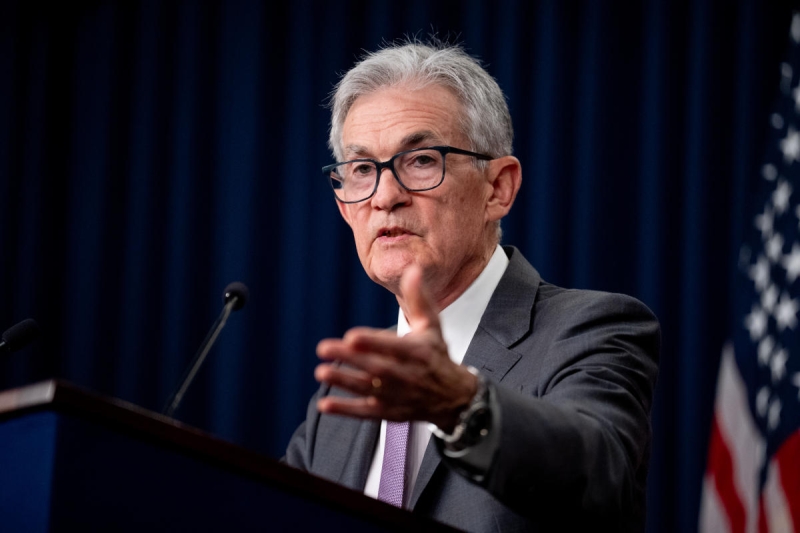
A fresh reading on consumer prices is likely to keep the Federal Reserve on track to cut interest rates next Wednesday by a quarter percentage point, disappointing some on Wall Street hoping for a half percentage point cut.
The Consumer Price Index on a core basis, excluding volatile food and energy prices — a measure the Fed prefers to zero in on — increased 3.2% in August, in line with expectations and holding the same level as July. A large reason for that was housing. The index for shelter rose 0.5% in August and was the major culprit for keeping inflation higher over the past month.
On a headline basis, CPI rose 2.5% over the prior year in August, a deceleration compared to July's 2.9% annual gain in prices and the lowest annual rate since early 2021.
Stocks dropped sharply lower following the report before starting to come back slightly as of mid-morning.
“Given the stickiness of services inflation, the Fed will likely cut by 25 basis points in the upcoming meeting and reserve the potential for more aggressive action later this year if we have further deterioration in the job market,” said Jeffrey Roach, chief economist for LPL Financial.
Read more: Cell phones, furniture, used cars: Here's where prices are easing up as inflation cooldown continues
Inflation has been dropping slowly since the second quarter, assuming a slow downward trajectory after concerns it was stalling in the first quarter this year. Inflation is now rising at 3.2% in August and July, compared with 3.3% in June, 3.4% in May, and 3.6% in April.
The latest inflation data takes a 50 basis point rate cut off the table.
“Today’s inflation data cemented in a [25] basis point cut next week. [50] basis points is out the window,” said Gina Bolvin, president of Bolvin Wealth Management Group. “The job market will continue to be an influencer.”
Following the CPI report, investor bets on a 25 basis point rate cut rose to 85%, as measured by the CME Fed Watch Tool.
Last week, both New York Fed president John Williams and Fed governor Chris Waller said it’s time to cut rates now.
"I believe the time has come to lower the target range for the federal funds rate at our upcoming meeting," Waller said in a speech last week at the University of Notre Dame titled "The time has come."
His comment echoes Fed Chair Jay Powell’s comments from Jackson Hole in late August when he said “the time has come” for the central bank to begin lowering rates.
Read more: Fed predictions for 2024: What experts say about the possibility of a rate cut
The central bank, which is set to meet Sept. 17 and 18, is laser-focused on the job market now, as the labor market has weakened and officials who were worried about inflation — the other half of the Fed’s dual mandate — are more confident inflation is cooling sustainably back to their 2% target.
Powell communicated a shift in Jackson Hole in the Fed’s focus more toward the labor market, noting that his confidence has grown that inflation is on a sustainable path back to 2% and that “we will do everything we can to support a strong labor market as we make further progress toward price stability.”
All eyes on the chairman: The Federal Reserve’s Jerome Powell takes a question at a news conference at the William McChesney Martin Jr. Federal Reserve Board Building on July 31 in Washington, D.C. (Andrew Harnik/Getty Images) (Andrew Harnik via Getty Images)
Powell noted that the Fed does not "seek or welcome further cooling in labor market conditions" and that the current level of the policy rate gives the Fed “ample room” to lower rates in response to any weakening in the job market.
Most analysts believe the last jobs report for the month of August was not weak enough to warrant cutting rates by 50 basis points. However, the downward revisions for the number of jobs added for July, which was already weak, and June were bad, and if things weaken further in the job market the Fed could consider cuts larger in size.
Read more: How does the labor market affect inflation?
Given that inflation is slowly moving down — and the job market is cooling but not pointing to recession — the Fed is likely to lay out a measured path of 25 basis point rate cuts for the remainder of policy meetings this year.
Jennifer Schonberger is a veteran financial journalist covering markets, the economy, and investing. At Yahoo Finance she covers the Federal Reserve, cryptocurrencies, and the intersection of business and politics. Follow her on X @Jenniferisms.





